
Copper Clad
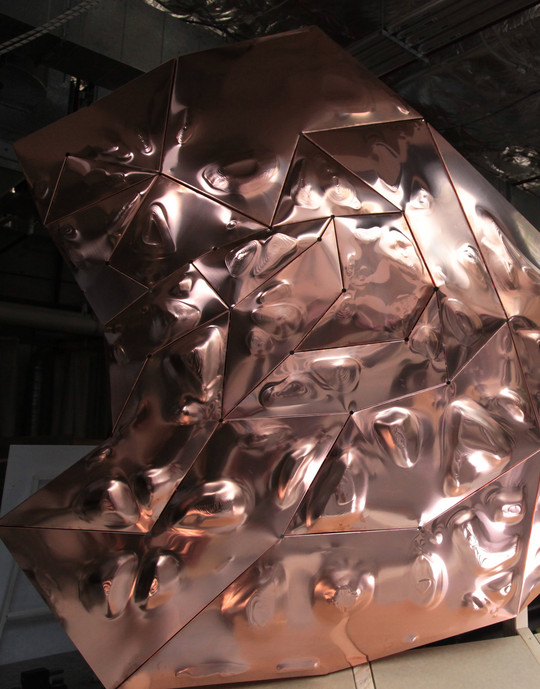
Copper Clad explores how the digital design and robotic fabrication methods developed in Stressed Skins and A Bridge Too Far can be integrated into current industry approaches to façade detailing. The project develops a novel façade system that incorporates standing-seam panel connections. Here, the non-standard geometry of the panels is interfaced back to a standardised structural sub-frame. The project employs copper sheet, a traditional and sustainable choice of metal for building cladding. Copper is highly formable and expressive, requires no further treatment once installed and lasts for hundreds of years. In façade applications, vibration caused by wind is a driver for material thickness and panel size. Copper Clad examines methods for applying robotic incremental sheet-forming methods to increase the structural performance of thin copper sheet. The process results in stiffer, thinner and lighter panels that are better able to resist vibration, use less material and thereby decrease the dead-loads carried by underlying structural systems.

The project took place as a 10-day workshop with students at the University of Technology, Sydney and established a collaboration with industrial partner Craft Metals. The workshop included prototyping processes that explored and evaluated different standing-seam details and panelisation designs, culminating in the fabrication and assembly of a 1:1 copper façade demonstrator. Copper Clad focusses on gaining direct experience of material and production parameters through hands-on experimentation. These investigations test how digital and physical fabrication variables affect material outcomes, thereby familiarising designers with process, material and tools.
To establish awareness of critical factors influencing material performance, we tested 300x300 mm copper squares that were set into reusable forming frames and developed a digital fabrication pipeline capable of producing robotic instruction code. Emphasis was placed on testing geometry, tooling and workcell-specific limits. Physical tests relate the forming angle and depth of the panels to fabrication parameters such as proximity to frame, step down and step over of the tool path, and tool size, length and speed. Standing-seam details were investigated in parallel to the forming tests. The standing-seam has advantages over other sheet metal details in that by standing perpendicular to the sheet plane, it acts as a stiffener. A basic detail was developed that is bent to shape using industry-standard hand tools, and CNC engraving was tested along fold lines in order to increase accuracy of the edge and reduce embedded tolerances.
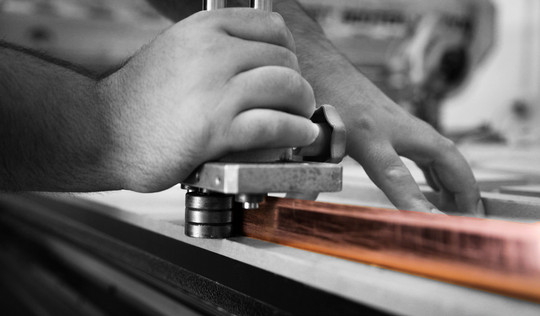
The modelling and simulation workflow used in Copper Clad utilises the predictive and multi-scale methods developed in A Bridge Too Far. Parameters related to fabrication, connection to sub-frame and structural performance are addressed across three different scales. The global shape is extracted from a sphere, which enables a consistent range of intersection angles between panels. At the element scale, a mesh-walking algorithm subdivides the global shape into strips of variably sized triangular panels. The size of each strip is limited to match standard stock and installation requirements. The orientation and subdivision of each strip is optimised to ensure that the bulk of standing-seams run near parallel to local bending forces, making the most effective use of the geometric stiffening effect.

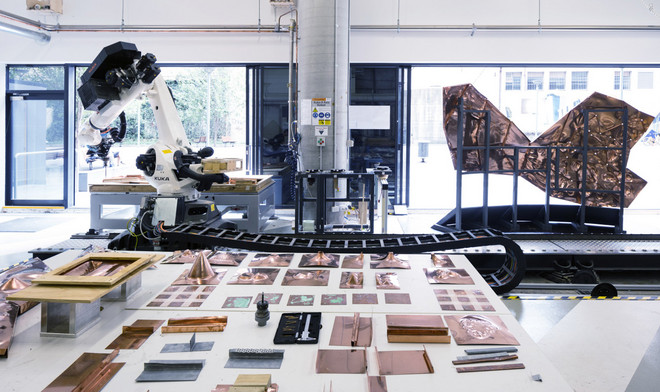

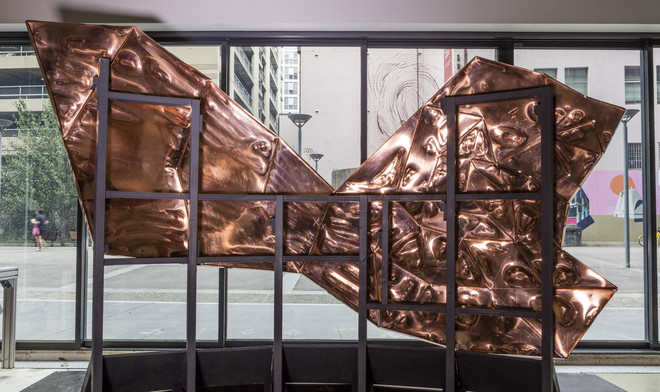
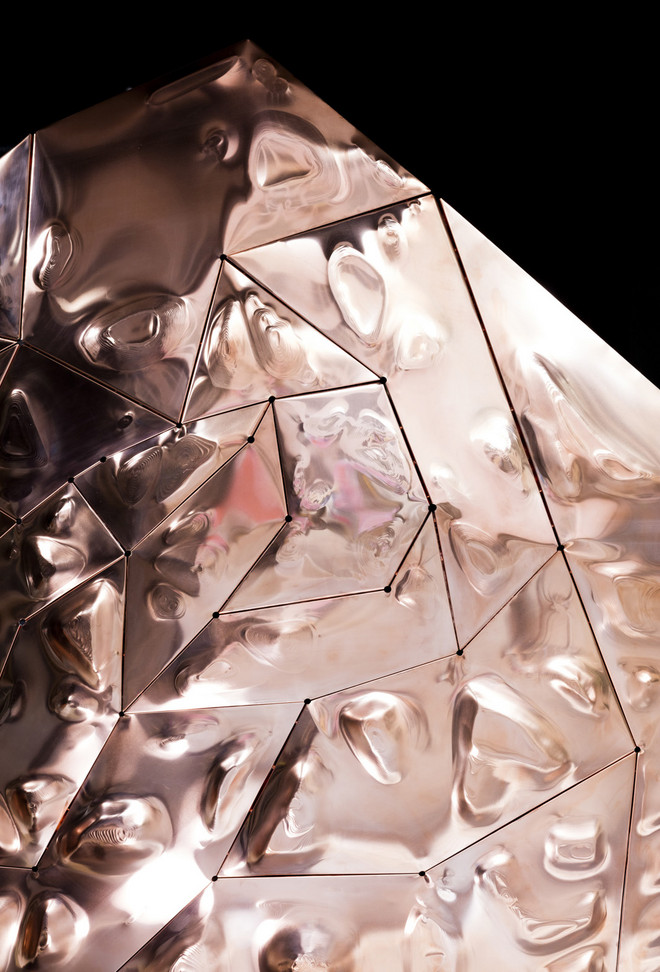
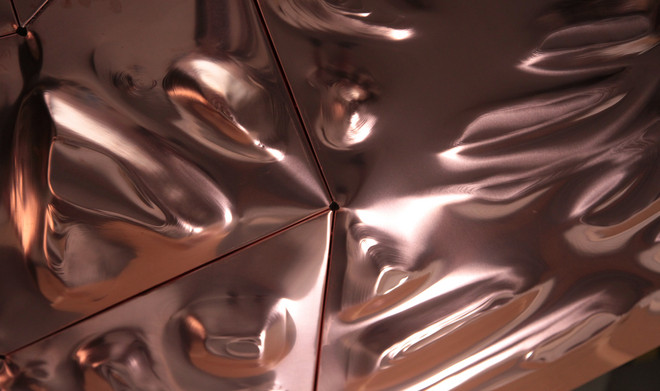
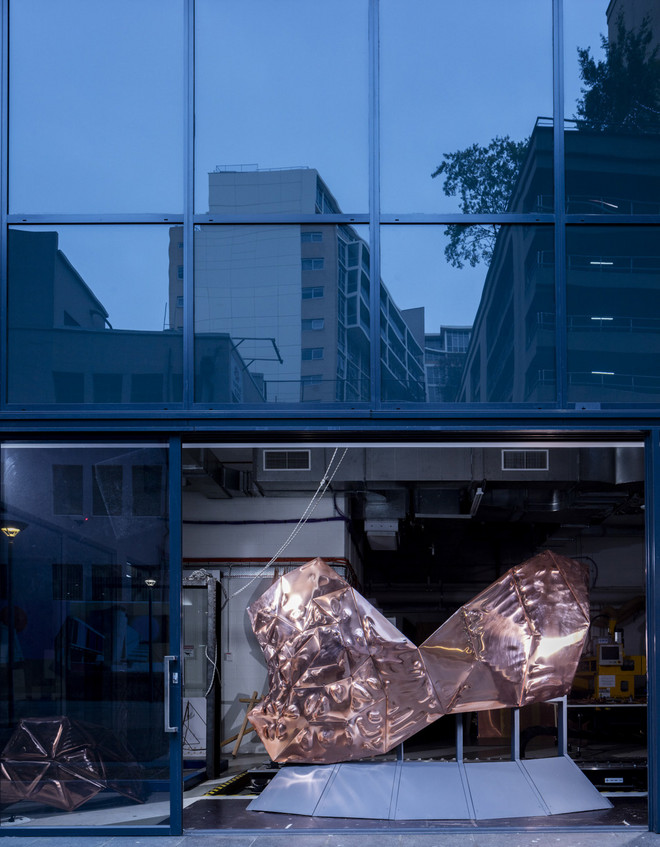
Publications
Nicholas, P., Schork, T., & Voorderhake, D. “Full-scale Prototype of a Lightweight and Robotic Incrementally Formed Copper Facade System with Standing Seam Connections”. In Proceedings of the IASS Symposium 2018: Creativity in Structural Design. Boston, USA. 2018. https://doi.org/10453/126840















